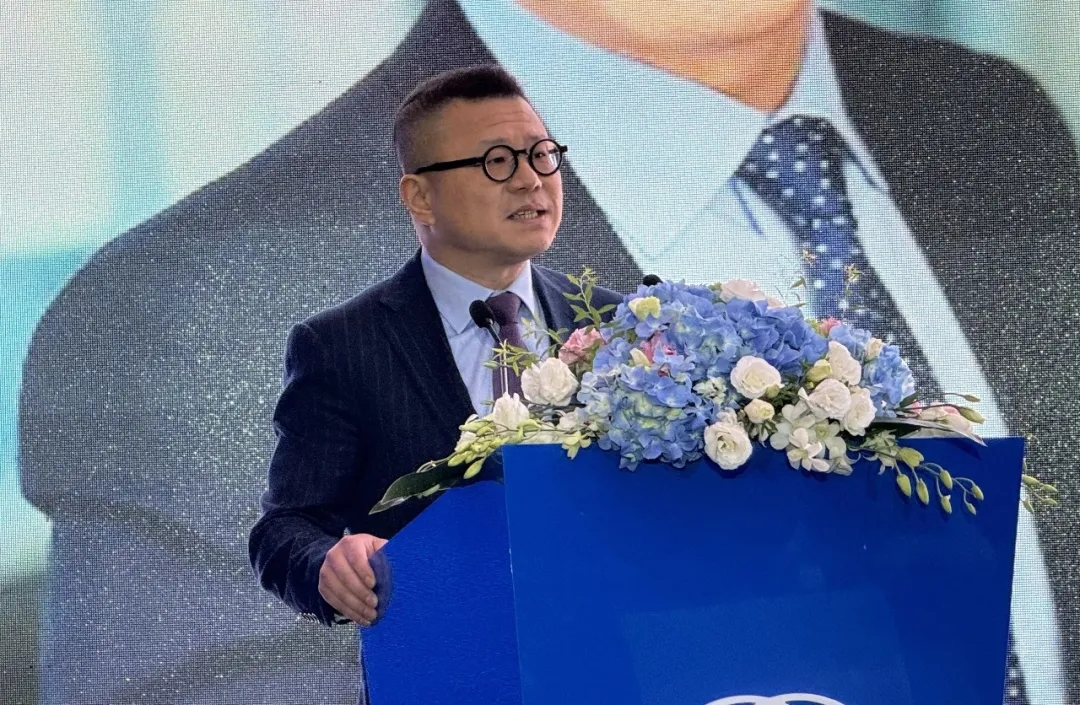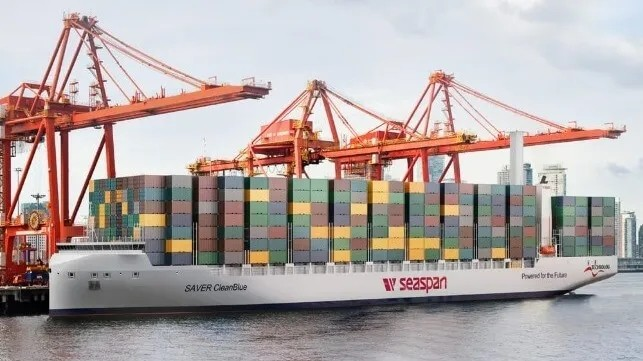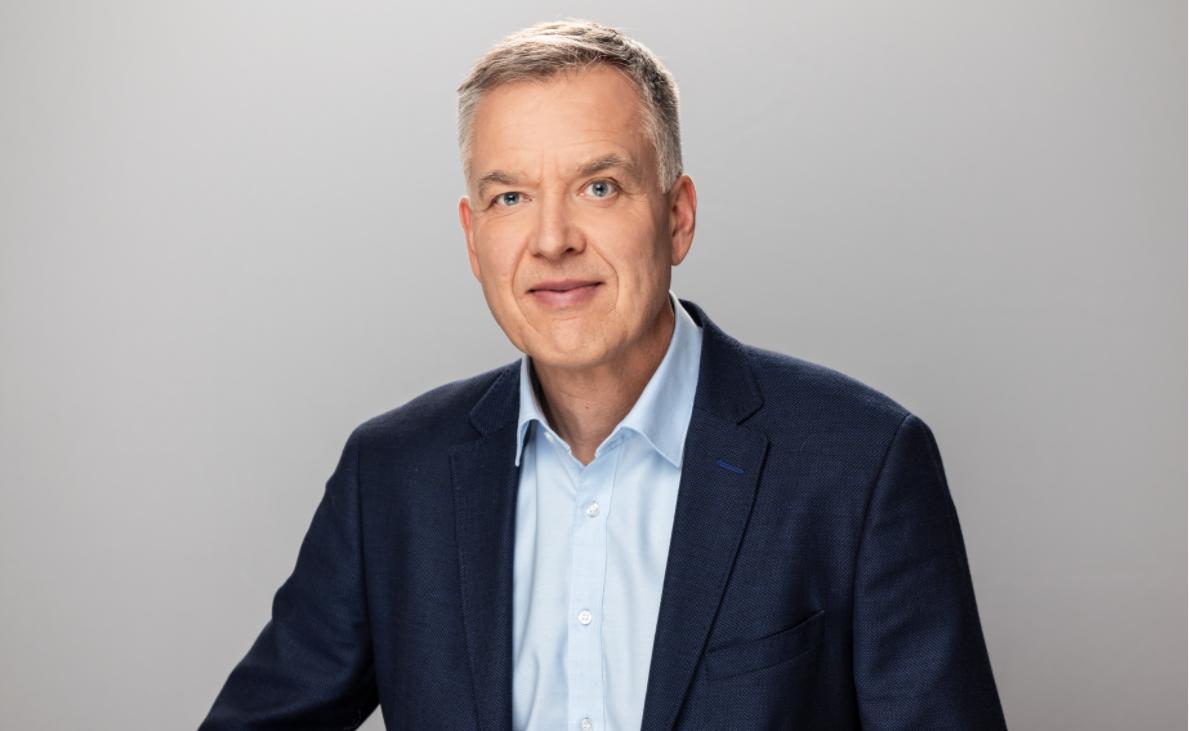Bing Chen believes that while the shipping industry is currently exploring multiple new energy options, ultimately, it will be “all roads leading to one destination.”

On June 26, during COSCO Shipping Holdings' 2024 Global Supply Chain Partner Conference, Bing Chen, Chairman, President, and CEO of Seaspan, delivered a keynote speech about the green decarbonization transition in the shipping industry, emphasizing the importance of feasibility, affordability, and sustainability.
Chen highlighted two key dimensions of the green decarbonization background facing the shipping industry: The first is the overall goal, which is the International Maritime Organization's (IMO) revised emission reduction strategy, aiming for net-zero emissions around 2050. The second dimension is the current reality, where various shipping companies have set ambitious decarbonization targets to meet this goal. Companies like COSCO Shipping, Hapag-Lloyd, CMA CGM, and Maersk have all announced their decarbonization timelines.
Currently, the global fleet comprises approximately 110,000 vessels, with less than 2% capable of using clean energy. Of these, LNG-powered ships account for about 60%, battery hybrid vessels for 25%, and the remaining 15% are fueled by biofuels, methanol, nuclear, hydrogen, and ammonia. New ship orders include more than 200 LNG dual-fuel container ships and 150 methanol dual-fuel container ships.
Chen concluded: “The future trend of energy use in container ships is still unclear, and the path to achieving green decarbonization goals is filled with unknowns and challenges.”
“Facing further enhanced green decarbonization targets and unclear green energy supply, we should focus more on feasible, affordable, and sustainable development.”
Chen also stated, “Decarbonization in shipping is not a revolution, but an evolution – a gradual process.”
For the future of decarbonization in shipping, Chen foresees a long and winding process, with the development of green decarbonization going from unknown to known, from scattered to concentrated, and from chaotic to orderly.
Initially, there will be a period of diverse experimentation. There is currently no unified choice for new energy, and for a considerable time, LNG, methanol, biofuels, ammonia, hydrogen, electricity, and even carbon capture will all be considered and tested as transitional solutions.
In the mid-term, economic screening will occur. Various supply chain participants, after initial trials and investments in research, production, and operation, may see a few new energy solutions selected by most liner companies for economic screening, determining their feasibility, affordability, and sustainability.


Ultimately, it will converge into a single path. Chen believes, “In the end, only one new energy can survive,” because the world’s major ports will ultimately only support one energy source with a standardized refueling system.
Chen offered suggestions for the decarbonization development in shipping from two perspectives: “Supply Chain Participation” and “Government Guidance.”
Shipping companies can build high-cost dual-fuel ships and bear some green energy premium, but sustainability requires participation from the entire supply chain. For example, the petrochemical energy industry can further reduce the cost of green energy; end customers, especially those with environmental requirements, need to recognize shipping companies’ green standards.
Chen stated, “It is neither realistic nor fair to place the entire burden of decarbonization on shipping companies alone.”
Additionally, Chen suggested that if the industry could have a clear path and execution under government regulatory guidance, it could achieve scale and define demand, attract investment, further stimulate consumption, and create a virtuous cycle. This would be better than the current state of “dispersed trial and error, limited resources, inefficient use, and potential chaotic waste, without the scale benefits to stimulate investment or achieve cost reduction and efficiency improvement.”


Seaspan’s Decarbonization Path
As an independent shipowner with over 2 million TEU capacity, Seaspan is dedicated to building and operating a diverse fleet. The company has the youngest fleet globally, with an average age of just five years.
Seaspan is also the only large independent container ship owner globally with both LNG dual-fuel and methanol dual-fuel container ships.
According to Xinde Marine News, Seaspan, in partnership with the Mærsk Mc-Kinney Møller Center for Zero Carbon Shipping and other partners, has developed various types of ammonia-fueled container ships.
A diversified asset portfolio means that in the early stages of green decarbonization transition, it can provide the most flexible solutions to the world's largest liner companies. Whether traditional fuel, LNG, or methanol, or even starting with traditional fuel and transitioning to LNG or methanol, there are multiple combinations and choices.
Secondly, timely technological transformation. Seaspan designs, builds, and operates energy-efficient and environmentally friendly fleets from multiple dimensions and continues to invest in ship operation. To date, Seaspan has implemented energy-saving and emission-reducing upgrades on over 100 vessels, including upgrading bulbous bows, propellers, high-efficiency coatings, shore power, and turbochargers.
Furthermore, Seaspan leverages smart and digital technology transformation, continuously improving and developing data analysis systems to achieve digital recording, reporting, analysis, and various navigation parameters, meeting regulatory compliance and commercial decision-making requirements, further enhancing fleet operational performance for high-efficiency energy-saving and emission reduction.
Seaspan Leading Dual-Fuel Container Ship Conversion
Seaspan is the first independent shipowner to propose dual-fuel conversion for traditional fuel container ships.
Seaspan required leading global engine manufacturers to cooperate in converting existing traditional fuel engines into dual-fuel engines. Seaspan also believes that many large ships aged 10 to 15 years have designs and hulls that meet future operational requirements. The efficiency issues of these ships mainly stem from engine limitations. Engine suppliers should not opt for easy solutions by pushing shipping companies to build new ships to address these problems.
Currently, traditional fuel accounts for over 58% of ships in the global fleet. Chen believes, “Only by addressing the high energy consumption of existing ships can we fundamentally advance the industry’s green and low-carbon transition.”
“We believe that continuously retrofitting existing ships, supplemented by building a portion of dual-fuel ships, can effectively drive progress. This approach increases capacity flexibility, providing a 15% reserve capacity to avoid capacity shortages in extreme situations. Moreover, retrofitting is economically more advantageous compared to new builds. Although retrofitted ships may not match new builds in efficiency, this overall strategy can effectively drive progress. We need to pursue sustainable, affordable green decarbonization.”
After a year of discussions, Seaspan finally reached an agreement with engine manufacturers to invest in developing methanol dual-fuel engines and jointly implement the retrofits with shipyards, engine manufacturers, liner companies, and other industry participants.
On the afternoon of June 26, Seaspan and COSCO Shipping Heavy Industry held a signing ceremony for the first batch of five 10,000 TEU container ships to be converted to methanol dual-fuel engines. These conversions will be carried out by Shanghai COSCO Shipping Heavy Industry. (Signing! The world’s largest independent container ship owner starts action)
As one of Xinde Marine News’ Top 10 Global Green Shipping Events of 2023, dual-fuel conversion marks its inaugural year in 2023, with Maersk, Seaspan, and COSCO Shipping successively announcing dual-fuel conversion plans.
On June 23, the 950 TEU feeder container ship R6339-“ECO UMANDE,” converted by Pacific Ocean Engineering (Zhoushan) Co., Ltd., was successfully delivered, becoming the world’s first container ship to complete methanol dual-fuel conversion.
According to Xinde Marine News, the methanol dual-fuel ship being retrofitted by Zhoushan Xinya Shipyard for Maersk will also enter the dock for conversion in July.
The era of dual-fuel conversion for existing ships has officially begun.
According to ABS Classification Society’s estimates, there are currently 3,300 ships in the global fleet (over 5,000 GT) that may require alternative fuel retrofits. ABS analysis also shows that the current capacity of ship repair yards can only meet demand growth until 2027, at which point global ship repair and construction yards will need further capacity expansion.
by Xinde Marine News Chen Yang
by Xinde Marine News Chen Yang
The opinions expressed herein are the author's and not necessarily those of The Xinde Marine News.
Please Contact Us at:






